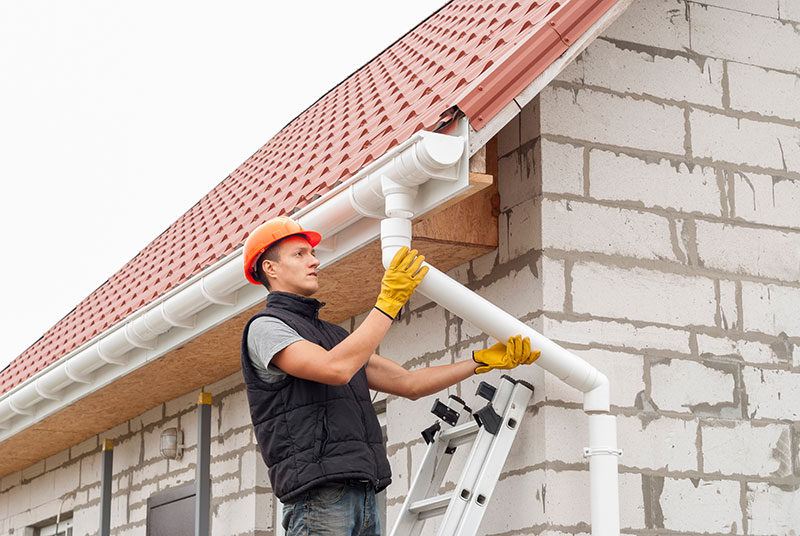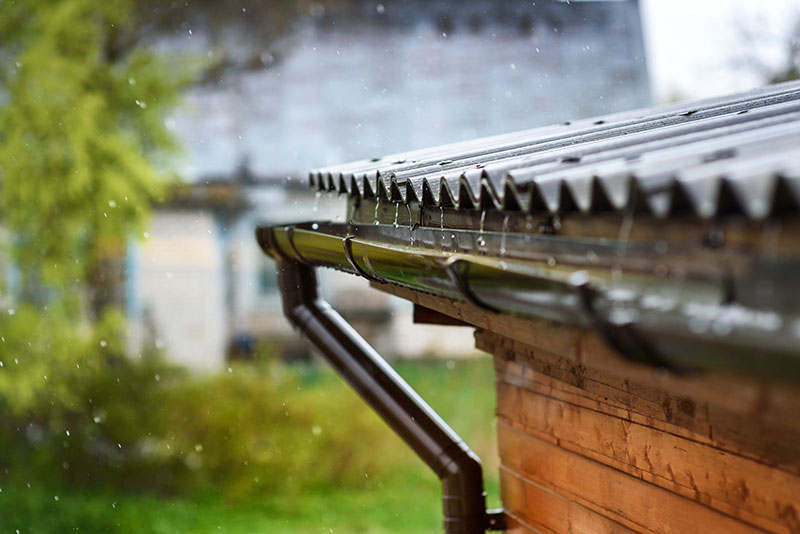Advertisement
While a little rain is refreshing, too much of it can cause serious problems around your home. Excess water can lead to flooding, leaks, and mudslides – all of which could weaken your home’s foundation. Repairs can be costly and dangerous. Hence, it’s crucial to take some precautions to keep your home safe from rain damage.
Fortunately, there are a few simple things you can do to protect your home from the harm rainwater can cause. Here are some clever ways:
- Check Your Gutters And Downspouts
One of the best ways to protect your home from rain damage is to ensure your gutters and downspouts are clear of debris. Clogged gutters can cause water to overflow, leading to leaks and flooding. To avoid this, clean your gutters at least twice a year and after any major storms.
But if you notice that your gutters are constantly getting clogged even after you’ve cleaned them, it might be time to install a new one. You may consider K-Guard Leaf-Free Gutter System or other gutter guards to keep your gutters tidy and free from debris. In addition, don’t forget to check your downspouts to ensure they’re not blocked as well. After all, these two elements work together to keep water away from your home.
Furthermore, disconnecting your downspouts is an excellent way to prevent rainwater from causing damage to your home. This approach will allow the water to flow away from your home instead of towards it. Just detach the downspout from the gutter and redirect it to a different area, such as a garden bed.
- Inspect Your Roof Regularly

Your roof is your house’s first line of defense against the elements outdoors like the rain, sun, wind, and snow. So, it’s vital to inspect your roof regularly for any signs of damage, such as missing or loose shingles and wear around the edges. Doing so will help you spot roof problems and fix them before they cause extensive harm to your home.
It’s also good to trim any tree branches hanging over your roof. These heavy elements can fall on your roofing system during a storm or high winds, which may cause significant damage.
- Install Flashings
Flashings are metal strips installed around vents, chimneys, skylights, and other openings in your roof. These devices help prevent water from seeping into your home through these openings. So, if you don’t have flashings around these vulnerable areas, now is the time to install them. This is especially important if you live in an area that gets a lot of rain or snow.
- Seal Cracks And Holes
You may not realize it, but even the most minor cracks and holes in your home’s foundation, walls, or floors can cause severe problems. Water can seep through these tiny openings and cause extensive damage to your home’s structure. That’s why it’s crucial to seal them right away.
You can use caulk or hydraulic cement to fill the cracks and holes. For bigger openings, you may need to use expanding foam. Be sure to read the instructions carefully before using any of these products.
Moreover, you may also check your windows and doors. These openings are common places for water to enter your home, leading to leaks and drafts. If you see any cracks or gaps, seal them with weatherstripping or caulking to prevent water from coming inside your home.
- Install A Sump Pump
If your home is prone to flooding, you may want to install a sump pump. This pump will remove any water accumulated in your basement or crawl space. It’s important to have a sump pump that’s the right size for your home, as a pump that’s too small won’t be able to keep up with the water, and one that’s too big will waste energy.
It’s also advisable to check the sump pump regularly to ensure it’s in good working condition. Otherwise, it may not be able to do its job correctly when you need it the most.
- Grade The Ground Around Your Home
The ground around your home should slope away from the foundation. This method will help prevent water from seeping into your home. If you see that the ground is leaning towards your home, you can use soil to create a barrier. This will block the water from getting too close to your foundation.
You may also want to add drainage to your property. It’ll collect the water and divert it away from your home. French, catch, and surface drains are some of the most common types of drainage systems.
Conclusion
Protecting your home from rainwater damage doesn’t have to be complicated or expensive. Follow the guidelines mentioned above and you can rest assured knowing that your home is well-protected against the elements.

